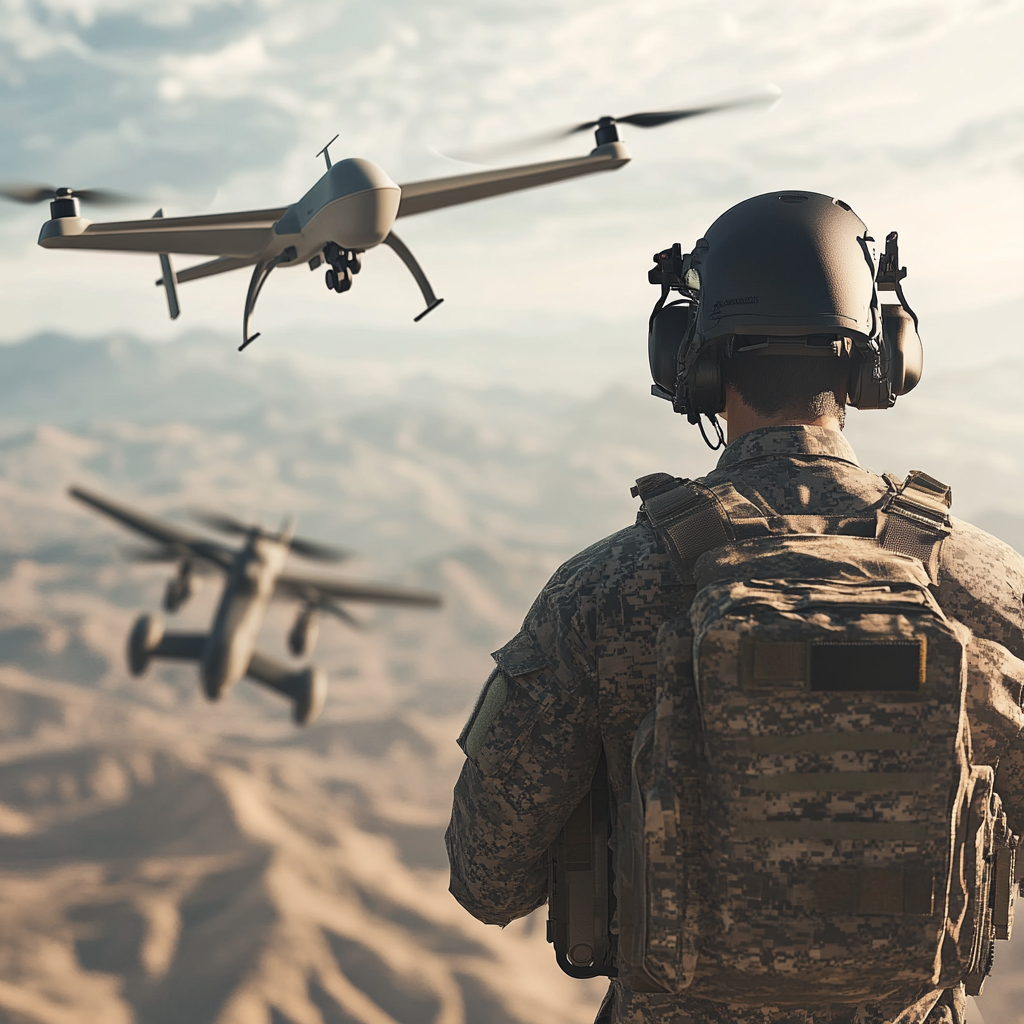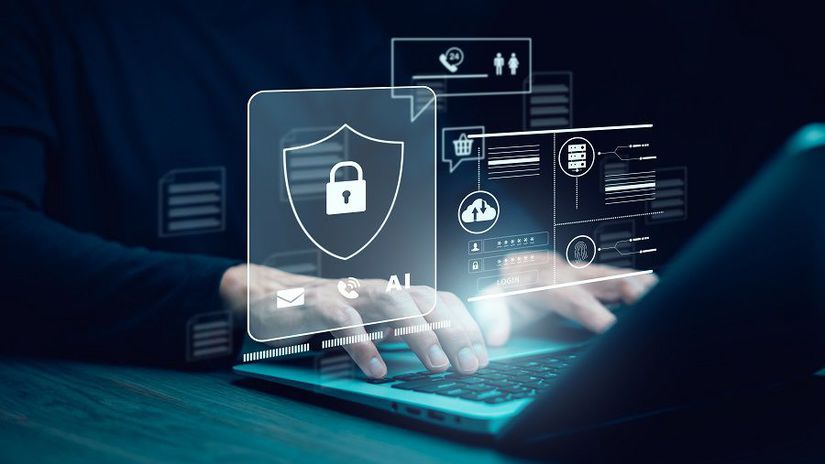Introduction
As unmanned aerial vehicles (UAVs) or drones become increasingly prevalent in both military and civilian applications, the need for secure and reliable identification systems has never been more critical. Traditional cryptographic methods used in drone Identification Friend or Foe (IFF) systems are facing a looming threat: the advent of quantum computers. This article explores the cutting-edge field of quantum-resistant cryptography and its crucial role in securing the future of drone identification.
The Quantum Threat to Current Cryptography
Understanding Quantum Computing
Quantum computers leverage the principles of quantum mechanics to perform computations. Unlike classical computers that use bits (0s and 1s), quantum computers use quantum bits or qubits. This allows them to perform certain calculations exponentially faster than classical computers.
Impact on Current Cryptographic Systems
Many of today’s cryptographic systems rely on mathematical problems that are difficult for classical computers to solve, such as integer factorization and discrete logarithms. However, quantum computers, using algorithms like Shor’s algorithm, could potentially break these cryptographic systems in a fraction of the time it would take classical computers [1].
This poses a significant threat to the security of current drone identification systems. If an adversary gains access to a sufficiently powerful quantum computer, they could potentially:
- Decrypt intercepted IFF communications
- Forge authentication credentials
- Impersonate legitimate drones
- Compromise the integrity of drone swarm operations
The Need for Quantum-Resistant Cryptography in Drone Identification
Longevity of Drone Systems
Drones and their associated infrastructure are often designed for long-term use, especially in military contexts. Cryptographic systems implemented today need to remain secure not just against current threats, but also against future quantum computers that may emerge during the operational lifespan of these drones.
Sensitivity of Drone Operations
Many drone operations, particularly in military and law enforcement applications, involve highly sensitive information. The compromise of a drone’s identity could lead to severe consequences, including:
- Unauthorized access to restricted airspace
- Interception of sensitive data
- Disruption of critical missions
- Potential loss of human life in military scenarios
Regulatory Compliance
As quantum computing advances, it’s likely that regulatory bodies will require the implementation of quantum-resistant cryptography in critical systems, including drone identification. Preparing for this shift now ensures future compliance and avoids potential operational disruptions.
Quantum-Resistant Cryptographic Algorithms
Several families of algorithms are considered promising candidates for post-quantum cryptography:
Lattice-based Cryptography
Lattice-based cryptography relies on the hardness of certain problems in lattice theory. These algorithms are considered some of the most promising for post-quantum cryptography due to their efficiency and versatility [2].
Examples include:
- CRYSTALS-Kyber: A key encapsulation mechanism (KEM) based on the learning with errors (LWE) problem in module lattices.
- CRYSTALS-Dilithium: A digital signature algorithm also based on module lattices.
Hash-based Signatures
These algorithms use hash functions to create digital signatures. They have the advantage of relying on minimal security assumptions and have a long history of cryptographic scrutiny.
Examples include:
- SPHINCS+: A stateless hash-based signature scheme
- LMS (Leighton-Micali Signature): A stateful hash-based signature scheme
Code-based Cryptography
These algorithms base their security on the hardness of decoding general linear codes. They typically offer fast encryption and decryption but have larger key sizes.
An example is:
- Classic McEliece: A code-based encryption system
Multivariate Cryptography
These systems use the difficulty of solving systems of multivariate polynomial equations over finite fields. They are known for small signature sizes but typically have larger public keys.
An example is:
- Rainbow: A multivariate signature scheme (Note: Recently, Rainbow has been shown to be vulnerable to certain attacks, highlighting the ongoing nature of post-quantum cryptography research) [3]
Implementing Quantum-Resistant Cryptography in Drone Identification
Challenges
Implementing quantum-resistant cryptography in drone identification systems presents several challenges:
- Resource Constraints: Drones often have limited computational power and energy resources. Some post-quantum algorithms require more computational resources than current cryptographic methods.
- Bandwidth Limitations: Some quantum-resistant algorithms have larger key sizes or signature lengths, which could impact the bandwidth requirements for drone communications.
- Interoperability: Ensuring that quantum-resistant systems can operate alongside existing cryptographic infrastructure is crucial for a smooth transition.
- Standardization: The field of post-quantum cryptography is still evolving, with ongoing efforts to standardize algorithms for widespread use.
Solutions and Approaches
Despite these challenges, innovative solutions are being developed to implement quantum-resistant cryptography in drone identification:
1. Efficient Algorithm Selection
Choosing quantum-resistant algorithms that balance security and efficiency is crucial. For example, the DroneCrypt IFF system, as described in the proposal, utilizes CRYSTALS-Kyber for key encapsulation and CRYSTALS-Dilithium for digital signatures. These algorithms offer a good balance of security and performance, with key generation, encapsulation, and decapsulation times of less than 1ms [4].
2. Hardware Acceleration
Implementing hardware acceleration for quantum-resistant algorithms can significantly improve performance. Field-Programmable Gate Arrays (FPGAs) or Application-Specific Integrated Circuits (ASICs) can be used to offload cryptographic operations, reducing the computational burden on the drone’s main processor [5].
3. Hybrid Cryptographic Schemes
During the transition period, hybrid schemes that combine traditional and quantum-resistant algorithms can provide a balance of compatibility and future-proofing. This approach ensures that systems remain secure against both classical and quantum attacks [6].
4. Blockchain Integration
Innovative approaches, such as the blockchain-based authentication system proposed in DroneCrypt IFF, can enhance the security and scalability of quantum-resistant drone identification systems. By leveraging distributed ledger technology, these systems can provide tamper-proof, decentralized management of drone identities [7].
5. Adaptive Security Protocols
Implementing adaptive security protocols that can adjust the level of cryptographic protection based on the perceived threat level and available resources can help optimize performance while maintaining security [8].
Case Study: DroneCrypt IFF
The DroneCrypt IFF system, as outlined in the proposal, serves as an excellent example of how quantum-resistant cryptography can be implemented in drone identification systems. Key features include:
- Post-Quantum Algorithms: Utilization of CRYSTALS-Kyber (256-bit post-quantum security level) and CRYSTALS-Dilithium (128-bit post-quantum security level) for key encapsulation and digital signatures respectively.
- High-Speed Performance: Achieving key generation, encapsulation, and decapsulation times of less than 1ms, addressing the computational constraints of drone systems.
- Blockchain Integration: Leveraging Hyperledger Fabric for secure, decentralized management of drone identities, enhancing the overall security and scalability of the system.
- AI-Enhanced Security: Employing machine learning models for real-time anomaly detection and threat assessment, adding an extra layer of security to the quantum-resistant cryptographic foundation.
Future Directions and Research
The field of quantum-resistant cryptography for drone identification is rapidly evolving. Some key areas for future research and development include:
- Lightweight Post-Quantum Algorithms: Developing even more efficient quantum-resistant algorithms specifically optimized for resource-constrained environments like drones.
- Quantum-Resistant Protocols: Designing communication protocols that are inherently resistant to quantum attacks, beyond just replacing the underlying cryptographic primitives.
- Post-Quantum Drone Swarms: Investigating the unique challenges and opportunities of implementing quantum-resistant cryptography in drone swarm scenarios.
- Quantum Key Distribution for Drones: Exploring the potential of quantum key distribution (QKD) systems for drone-to-drone or drone-to-ground station secure communication [9].
- Standardization and Certification: Contributing to ongoing efforts to standardize post-quantum cryptography and develop certification processes for quantum-resistant drone identification systems.
Conclusion
Quantum-resistant cryptography is not just a futuristic concept but a present necessity in the realm of drone identification. As quantum computing technology advances, the security of traditional cryptographic methods used in drone IFF systems is increasingly at risk. By implementing quantum-resistant algorithms and innovative approaches like those seen in DroneCrypt IFF, we can ensure the long-term security and reliability of drone identification systems.
The transition to quantum-resistant cryptography in drone identification presents challenges, but it also offers opportunities for enhanced security, improved scalability, and innovative system designs. As research in this field progresses, we can expect to see even more efficient and secure quantum-resistant solutions tailored specifically for the unique requirements of drone systems.
Ultimately, the adoption of quantum-resistant cryptography in drone identification is not just about countering a future threat – it’s about building a foundation of trust and security that will enable the continued growth and innovation in drone technology for years to come.
References
[1] Shor, P. W. (1997). Polynomial-Time Algorithms for Prime Factorization and Discrete Logarithms on a Quantum Computer. SIAM Journal on Computing, 26(5), 1484-1509.
[2] Ajtai, M. (1996). Generating Hard Instances of Lattice Problems. Proceedings of the Twenty-eighth Annual ACM Symposium on Theory of Computing, 99-108.
[3] Beullens, W. (2022). Breaking Rainbow Takes a Weekend on a Laptop. IACR Cryptol. ePrint Arch., 2022, 214.
[4] Schwabe, P., Avanzi, R., Bos, J., Ducas, L., Kiltz, E., Lepoint, T., … & Zhang, G. (2020). CRYSTALS-Kyber. NIST Post-Quantum Cryptography Standardization.
[5] Howe, J., Pöppelmann, T., O’Neill, M., O’Sullivan, E., & Güneysu, T. (2015). Practical Lattice-Based Digital Signature Schemes. ACM Transactions on Embedded Computing Systems, 14(3), 1-23.
[6] Bindel, N., Brendel, J., Fischlin, M., Goncalves, B., & Stebila, D. (2019). Hybrid Key Encapsulation Mechanisms and Authenticated Key Exchange. Post-Quantum Cryptography, 206-226.
[7] Michelin, R. A., Dorri, A., Lunardi, R. C., Steger, M., Kanhere, S. S., Jurdak, R., & Zorzo, A. F. (2019). UAVchain: A Blockchain-based Secure UAV Network. 2019 IEEE Wireless Communications and Networking Conference (WCNC), 1-6.
[8] Chaintoutis, C., Akriotou, M., Mesogiti, I., Kanatas, A., & Komnakos, D. (2021). Adaptive Security in SDN-Enabled 5G Networks for UAV Communications. Sensors, 21(17), 5702.
[9] Mehic, M., Fazio, P., Voznak, M., & Chrenko, D. (2020). Security and Privacy of Quantum Drone Networks. IEEE Network, 34(6), 6-13.





